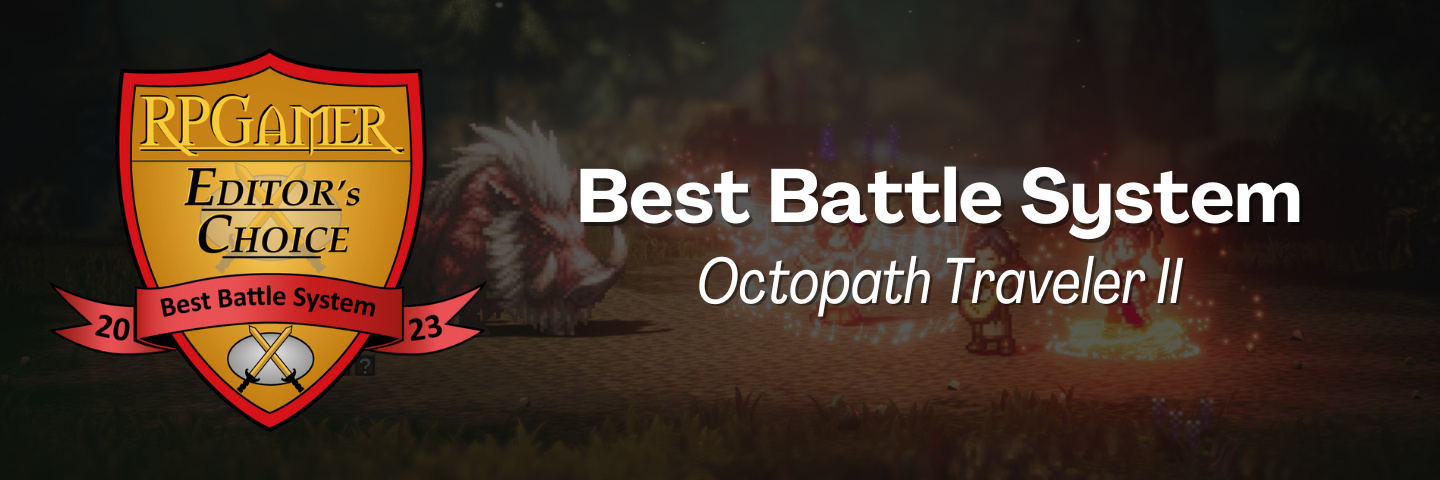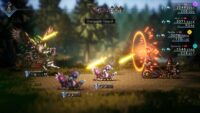| « Best Expansion |
Best Battle System |
Best Story » |

The battle system in Octopath Traveler II is a true delight for turn-based enthusiasts. Evolving from the foundation laid by the original game, it maintains a design that empowers players, providing a wealth of information on the battle screen. The Octopath battle system exudes excellence through three main elements: the job system, enemy shields, and the boost point system. The deep job system with main classes and subclasses and the methods for obtaining additional versions of each allow players to customize their team setup in near infinite combinations, an amazing boon to those that love to experiment. With each unique monster in the game sporting an unknown shield in battle, early battles are an enjoyable trial-and-error puzzle of discovery. Once the right weapon or element is discovered, an on-screen icon of the corresponding type persists for subsequent encounters with that enemy. Boost points (BP) are granted to characters each turn, with a maximum of five that can be banked. Players can expend up to three BP on a character’s turn to enhance attack, skill, or spell power, with powerful skills and spells requiring a full BP expenditure.
While those three systems were mostly fleshed out in the first Octopath game, a noteworthy addition to the engaging battle system is the introduction of latent powers, unique to each character based on their starting class. Controlled by a meter that fills during battle interactions, these powers unleash potent attacks or provide significant buffs when fully charged, serving as game-changing elements when strategically deployed. These small, yet powerful additions, elevate Octopath Traveler II’s battle system to extremely noteworthy heights.
When Larian Studios created its Original Sin titles, it raised the bar for what can be expected in cRPG combat. With Baldur’s Gate III, it successfully carried that ethos over to D&D’s 5th Edition framework in a way that largely improves upon its source material. While 5th Edition tends feature fairly basic tactics, the combination of Larian’s level design and willingness to utilize some of the general actions often left by the wayside in adaptations allowed it to consistently experiment with the tools available. What results is an RPG with a healthy dose of immersive sim mechanics that gives players a lot of options for character-building. Where a Dungeon Master at the table might tire at the idea of keeping track of the number of barrels nearby or how much grease is on the ground and where, Baldur’s Gate III is able to handle this immaculately so that players can focus directly on the many interesting tactical decisions available to them at any given point in time. There should be more games that recognize that sometimes the most appropriate thing to do to an enemy is to push them off a roof.
It should not be a surprise that Star Ocean: Second Story R has been nominated in the Battle System category. This is a series known for its combat, and the additions to this already fantastic battle system are many and welcome. From the ability to break enemy shields to the Assault Actions that allow for benched characters to hop into battle and use a signature move. Star Ocean: The Second Story R’s fast and frantic system is addictive, engaging, and memorable to say the least.
by Matt Masem, Zack Webster, and Sam Wachter










Recent Comments